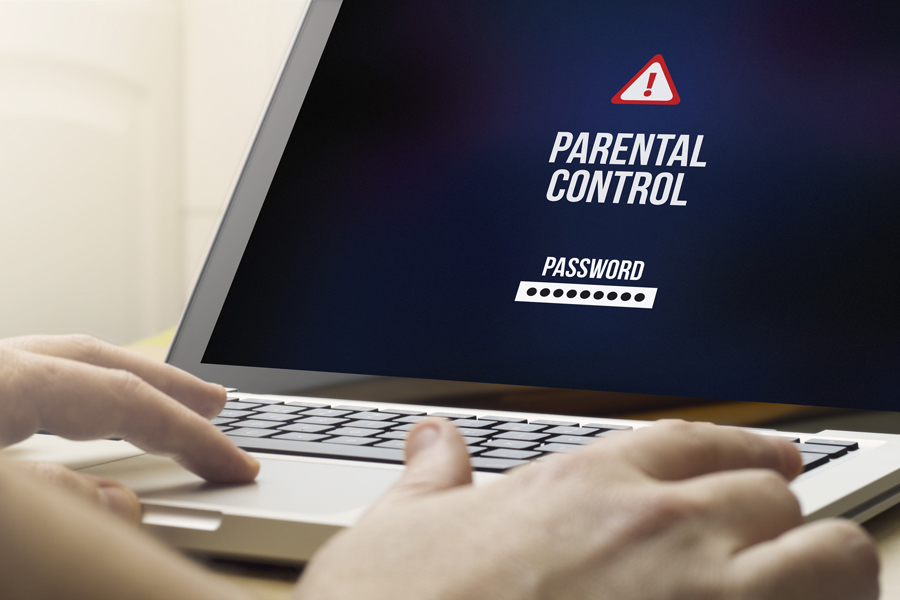How can we understand photo-sharing decisions on social media, and how can we curb its dangers?
Photo sharing is a cornerstone of social media, but for those appearing in the photos spreading across the internet, the attention is not always invited, nor appreciated. Professor Bennett I Bertenthal has joined researchers in the fields of psychology and computer science – Apu Kapadia, Kurt Hugenberg, Mary Jean Amon, Rakib Hasan – to get a better understanding of why people share photos that could harm others, and whether technology can help curb it. Their research is both fascinating and sobering.
Photo sharing on social media is inexhaustible and often ill-considered. Billions of photos are shared every day, and behind each one lies someone’s decision to post or share it. That such photos are pervasive has made the act of posting them seem innocuous, and yet every decision has consequences. Sharing a photo of dancing kittens is one thing; that of a small child in a swimsuit jumping into a pool of water, while seemingly innocent, is entirely another.
If photo sharing is to be ethical and free of harm, we need a better understanding of the path of a shared photo and the human behaviour behind sending it.

The ‘pillow feathers’ analogy is apt here. Photo sharing is akin to ripping open a feather pillow atop a tall building on a windy day. The photos, like feathers, find a life of their own as they quickly scatter far beyond their origin (for more on the lifecycle of a photo from a privacy perspective, see this previously published article here). Importantly, their destination is out of the hands of the originator – they can be grabbed and used by whomever, for whatever reason they wish.
Participants – surprisingly – reported a higher likelihood of sharing photos when first reminded to consider the privacy of the person in the photo.
To extend the analogy, social media is the wind. The companies behind social media platforms such as Facebook, Twitter, Instagram, WhatsApp, Snapchat, and Apple, are under increasing pressure to be more accountable for the harmful outcomes of the often unpermitted, shared photos on their platforms. Calls for more regulation echo loudly to limit the cyberbullying, shaming and abuse that can stem from such photo sharing. Social media companies, perhaps fearful of increasing regulations, are reacting to this with various technical solutions, each with mixed results.
But is it their sole responsibility to do so? What about the point of origin? Can a better understanding of why people share photos, and the decision-making processes involved, help guide the design of technological and behavioural interventions to reduce the harms of photo sharing on social media?

This is what drives the work of Bennett I Bertenthal, a professor of Psychological and Brain Sciences at Indiana University (IU), and his colleagues Kurt Hugenberg, a social psychologist (IU), computer scientists Apu Kapadia (IU) and Rakibul Hasan (Arizona State University), and Mary Jean Amon, an experimental psychologist at the University of Central Florida.
Their research is proving timely and significant, and is yielding some surprisingly counter-intuitive findings.
Understanding photo sharing
Bertenthal and his team have conducted extensive research on why people share risky photos online, and to assess whether the inclusion of simple warnings or nudges affects people’s likelihood of sharing photos.
In one experiment, 379 participants were shown 98 photos previously ranked on valence, ie, how positively or negatively the subject of the photo was portrayed. Participants were then asked how likely they were to share these photos on social media after taking into account the privacy of the person in the photo. A control group was simply asked how likely they were to share the photos on social media.
While participants in both the control and privacy conditions indicated a lower likelihood of sharing photos that portrayed people negatively, they – surprisingly – reported a higher likelihood of sharing photos when first reminded to consider the privacy of the person in the photo. A follow-up study requesting explanations for responses revealed that the privacy condition led to less concern with others’ privacy. One interpretation for this result is that the privacy warning created a framing effect that reduced participants’ consideration of other reasons for not sharing photos.

A related question concerned whether considerations of a photo subject’s privacy would override the perceived comic value of a photo. In a follow-up study, Bertenthal and his team queried 437 participants about their humour style, likelihood to share photo memes, and history of sharing others’ photos. Participants were broadly categorised into humour deniers, who use humour infrequently; humour endorsers, who actively and openly use humour, often directed at others; and self-enhancers, who use humour but mainly to entertain themselves. Again, they were asked in the experimental condition to consider the subject’s privacy.
As expected, participants who frequently used humour, especially aggressive and self-deprecating humour, were more likely to share photos at the expense of the photo subject. However, what was surprising was that when primed to consider the subjects’ privacy, only humour deniers demonstrated increased sharing. Perhaps the previously hypothesised framing effect has a stronger influence on humour deniers, who already consider humour less important for their sharing decisions.
These two studies also revealed that other factors, such as gender or the frequency with which a person shares photos on social media, could have a bearing on photo sharing. More generally, these findings highlight that numerous variables must be considered when it comes to protecting the privacy of others online. Seemingly simple or clear-cut solutions may not have the intended effect.
But the issue of protecting those in shared photos takes on a whole different level of importance when they are among the most vulnerable. Children fall into this category, and parents are often unwitting protagonists.
Sharenting behaviours
It now seems almost instinctive for parents, particularly parents in the US, to share photos of their children’s life journeys on social media – postnatal arrivals, birthdays, achievements, and general clowning around – all catalogued and shared for public consumption. This tendency has been termed ‘sharenting’. There are documented benefits for this practice beyond sharing children’s accomplishments with close friends and family. Parents can receive valuable information, validation, and support from experts and other parents; public displays of parental pride can foster wellbeing in children; and sharing can help develop and maintain social connections.

However, the flip side of such parental behaviour has some troubling consequences: the theft of photos and private information then used for commercial reasons; bullying of children by peers; the misuse of photos, including by sexual predators; and even kidnapping. Considering the gravity of these consequences, it is important to question how parents can navigate such risks, or whether they are fully aware of them in the first place.
To investigate the characteristics that predict sharenting behaviour, Bertenthal and his team collected information from 493 parents of young children in the US on self-reported demographics, social media activity, parenting styles, children’s social media engagement, and parental sharing attitudes and behaviours. They found that most social media active parents shared photos of their children online and felt comfortable doing so without their child’s permission. Sharing frequency also corresponded with their general frequency of social media use. This suggested parents didn’t feel that sharing pictures of their children held any more risk than sharing other photos.
Other factors that encouraged sharenting included the size of the social media networks and the support levels for the practice in those networks; more permissive and confident parenting styles; and high levels of social media use by the children.
It now seems almost instinctive for parents, particularly parents in the US, to share photos of their children’s life journeys on social media.
One important outcome of this research is that confident parents – those who rated sharenting as safe – were more likely to share photos of their children on social media; but this does not mean that sharing children’s photos online is necessarily safe.
Opportunities and challenges for improving risky photo sharing
So, if privacy issues aren’t really deterring risky photo sharing, who is responsible for protecting those facing possible harm by photo sharing? Fingers – including those of governments – generally point in the direction of big tech; isn’t there a button, setting, or some other technological intervention that can discourage such behaviour?

Apple has taken a step. In August 2021, it announced new communication tools that ‘will enable parents to play a more informed role in helping their children navigate communication online’, and that Messages – its native message-sharing app – will ‘use on-device machine learning to warn about sensitive content’ and encourage users to consider the impacts of sharing.
We now have reason to question the efficacy of these measures. The research presented here suggests, firstly, we need to re-evaluate parental control when it comes to photo sharing; and, secondly, think carefully before making assumptions about how social media users value the privacy of others in photos they share. Apple’s idea of warning users before sharing may not work for all children at all times, and might even prove counter-productive. Imagine a teenager, at that stage of life when risk-taking peaks, being confronted with such a warning: hitting ‘send’ might earn them a badge of honour.
Photo sharing will not go away, but ethics and common decency demand something be done to reduce the considerable harm it can cause. The issue is complicated, and the solution is beyond the realm of a technical tweak. Bertenthal and his team suggest a crucial answer lies in an honest examination of human behaviour, and their diverse research continues to yield timely and influential results.
Personal Response
What can we learn about improving the privacy of others from studying photo sharing on social media?
Photo sharing practices on social medial offer critical insights into how people treat the personal and private information of others. Our initial attempts to motivate concerns for the privacy of others before deciding to share photos revealed that many warnings and nudges do not produce the desired effect and instead backfire. This finding challenges recent proposals that warnings and nudges are effective strategies for confronting threats to digital privacy. Critically, individual differences in people and situations will often influence photo-sharing decisions. We are currently exploring some of these individual differences by studying how the race of the photo subject may affect the likelihood of sharing photos.